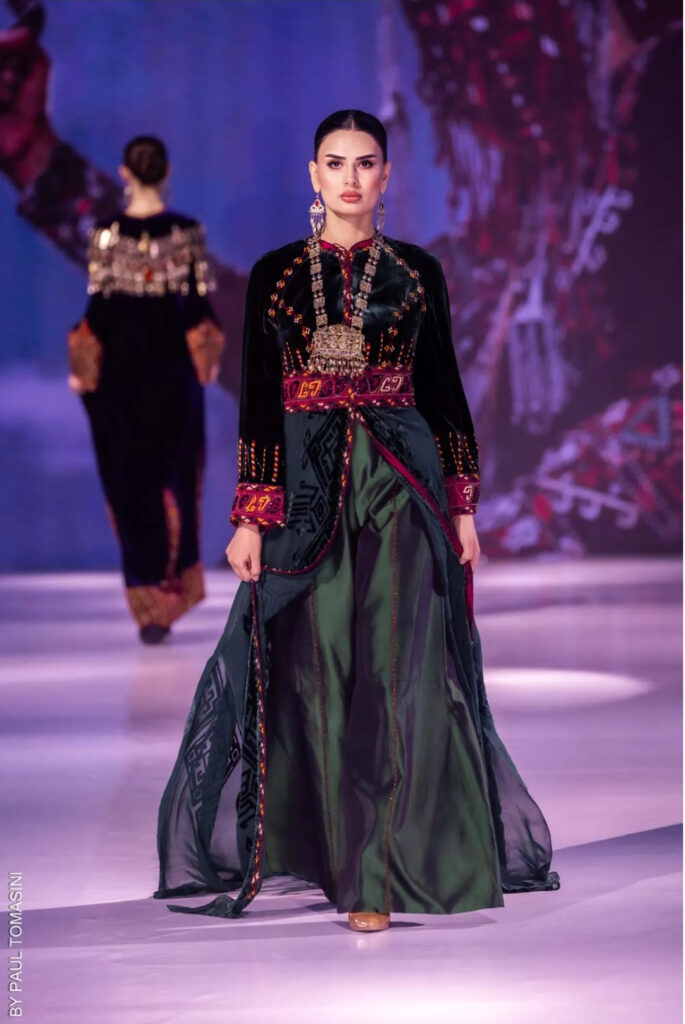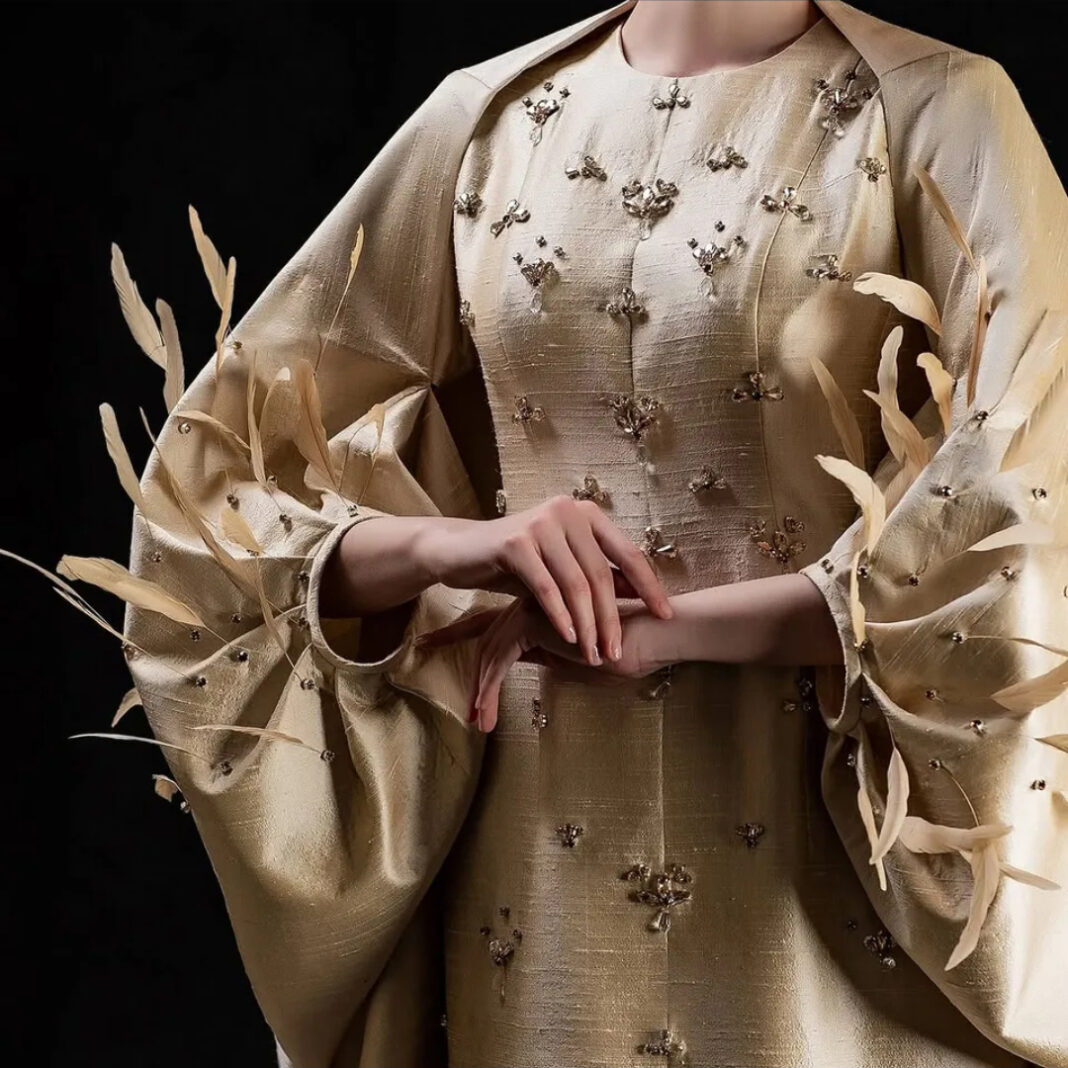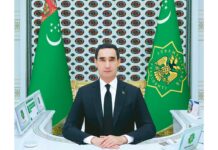As we reported before, from March 17 to 19 was held an international fashion show, by members of the Union of Industrialists and Entrepreneurs of Turkmenistan.
The event received broad coverage from prestigious fashion publications and broadcasters, including “Al Arabiya TV”, “Al Dubai Arabiya TV”, “Fashion TV”, “Vanity Fair”, “Vogue”, MARIE CLAIRE ARABIA, GRAZIA, HELLO RUSSIA, ELLE, and FASHION NETWORK.
On March 24, Giulio Solfrizzi, correspondent of Italian Vogue, published an article titled “I was in Turkmenistan to see how local traditional fashion is opening up to the world.” (Sono stato in Turkmenistan per vedere come la moda tradizionale del posto si sta aprendo al mondo).
Turkmenistan fashion from the experience of Giulio Solfrizzi.
“The Turkmenistan Fashion Project, a three-day event in Ashgabat, featured fashion shows and a host of Turkmen stylists (and others) who reimagined local clothing codes and engaged in dialogue with the West.
By consulting a map, one can discover lesser-known, yet worthy destinations. Perhaps fashion will soon experience a similar surge in recognition.
The mission of the “Fashion of Turkmenistan” project was to promote the nation’s culture through historically rich clothing and textiles.
Usually, local women wear straight dresses that reach their ankles or feet, creating a cascading floral effect.
The colors used, such as ruby red, burgundy and crimson, symbolize the strength and vitality of the natural world.
Silver talismans, adorned with sparkling stones, complement the motifs on fabrics like velvet, silk, cotton, and wool.
 Tradition dictates that girls begin wearing jewelry at an early age, including bracelets, pearl necklaces, and multi-layered jewels.
Tradition dictates that girls begin wearing jewelry at an early age, including bracelets, pearl necklaces, and multi-layered jewels.
This is also evident in the collections of local brands such as Gólli and Mähirli Zenan, which feature a well-chosen mix of patterns. These dense patterns recall the holistic approach of the artisans who adorn carpets and curtains with the same motifs. Moreover, Ayna Durdylyeva, the founder of Mähirli Zenan, is a doctor driven by a passion for Turkmenistan’s fashion heritage. She has promoted this heritage in France and Italy, thanks to the support of Hind Joudar, a legal expert, consultant, and president of the Oriental Fashion Show, a concept that promotes high oriental fashion.
Joudar conceived and implemented the “Fashion of Turkmenistan” project, a platform for Turkmen creators and artisans, supported by the Union of Entrepreneurs of Turkmenistan. The result was three days of fashion shows, open to the public, providing an international platform for talents to showcase their skills.
The Turkmen fashion system and business are almost entirely in the hands of women. Here, in the land white buildings, and colorful night lights, the profession of stylist, which often coincides with that of a businesswoman, is captivating. Ishangulyev Maysa, for example, despite graduating from the Faculty of Computer Science at the Turkmen Polytechnic Institute, has dedicated herself since 2017 to sewing, designing, and creating clothes that reflect her interest in the stylistic codes shared by the city’s inhabitants, expressed through her brand Ayperi Modalar.
Designer Nagyshly Guzer’s desire to celebrate the rich Turkmen culture extends beyond fashion design. Similarly, the family project MYNASYP, a collaboration between a mother and daughter, creates products suitable for a broad audience, utilizing traditional embroidery to appeal to both local and international consumers.
A Little Bit of the West in the East
However, the East should not be strictly separated from the West. Marco Polo, aiming for India but landing in America, set sail from Venice, a crucial maritime trade hub. Centuries ago, the Venetian port was a crossroads for spices, fabrics, and food from around the world. It could be argued that the founders of two Western brands, who arrived in Ashgabat, followed Marco Polo’s unintended path.
(Courtesy of Avaro Figlio)
Avaro Figlio, the creation of creative directors Dario Biglino and Sulabh Kalra, showcased Italian fashion throughout the evening. Their focus was on elegant evening gowns that blended a contemporary spirit with the handcrafted style of Italy, emphasizing a cinematic aspect influenced by Biglino’s background in short films and commercials. In their vision, garments are form-fitting, skirts and sleeves are voluminous, and the female form is a canvas to be enhanced.
(Courtesy of Avaro Figlio)
Claude Patrick, on the other hand, brought a touch of Paris. He introduced the concept of cocktail fashion, which flourished in the French capital from the 1960s, coinciding with the rise of ready-to-wear, and he creatively curated seasonal collections for the Olivier Lapidus brand. In his atelier, where many oriental princesses and noblewomen were dressed, a balance was struck between classic elegance and the stylistic individuality of his clients. Thus, three-quarter sleeves, fitted jackets that accentuate the waist, midi skirts, and flowing fabrics were featured. In this manner, the “Turkmenistan Fashion” project seeks to unite diverse cultures through the common language of clothing. While distinct, these ensembles of fabrics and decorative elements reflect both the creators and their consumers, and consequently, society itself.”









